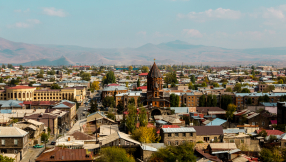
AMD's R9 390X series of graphic processors has yet to be officially launched but the company is already working on its upcoming iteration of GPUs. Based on the Arctic Island architecture, the graphic chips have been codenamed Greenland and are expected to be fabricated on the 14 nm FinFET process, according to a report published by Hexus.
Currently, only Samsung has employed the use of the 14 nm FinFET architecture. While the following has not been confirmed by either Samsung or AMD, it is possible that the latter will be teaming up with the South Korean firm in order to release its highly efficient graphic processors.
Additionally, similar to the company's R9 390X, which will feature HBM (high bandwidth memory), AMD's Arctic Island lineup will also feature HBM, but tier 2, which will result in speeds greater than its predecessor's and far greater performance than what the traditional GDDR5 type memory brought to the table. According to the tech website, the upcoming graphics processors will be able to deliver up to 1 TB/s of memory bandwidth, while AMD's R9 390X is only reported to deliver 640 GB/s of the same bandwidth.
The smaller lithographic process will no doubt improve performance and energy efficiency, and with these new features, AMD will finally be able to take the fight to NVIDIA, which is prepping its Pascal lineup of graphic processors. Additionally NVIDIA also unveiled that it is going to replace the GDDR5 type memory with HBM2 for its Pascal lineup, which will ultimately mean the end for GDDR5, at least for high-end graphic cards.
AMD has not given an exact timeline for the release of its Greenland GPUs, but 2016 looks to be the ideal period for the company to strike NVIDIA with brutal force.
AMD already prices its products lower than NVIDIA's, so the new manufacturing process will give the former an edge over its superior competitor.













